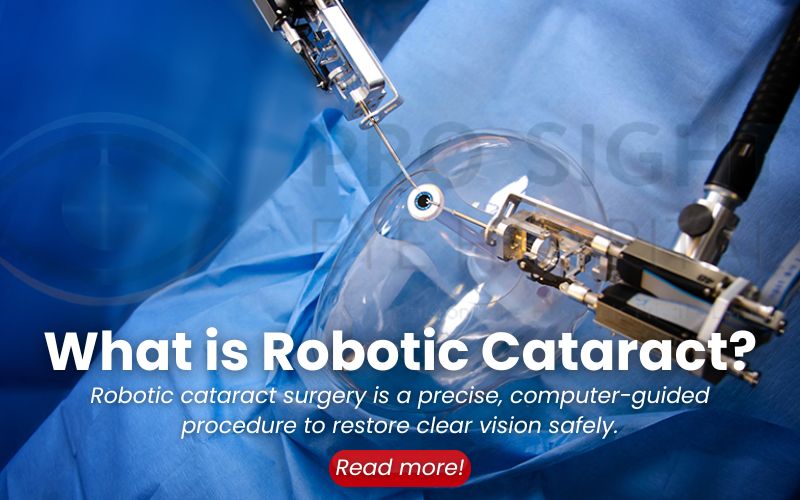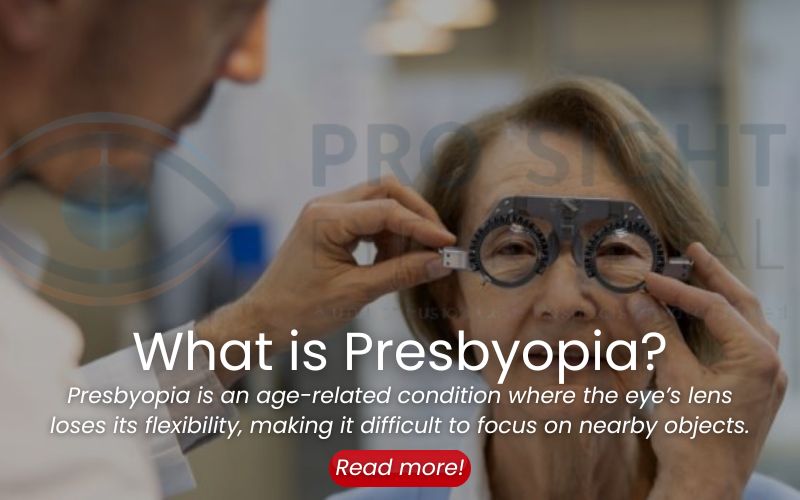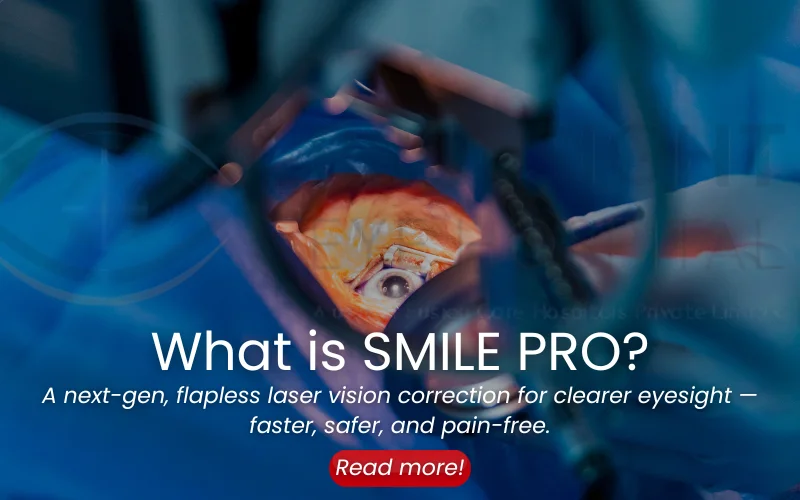
What Is Robotic Cataract Surgery and Why Is It Gaining Popularity?
One of the most popular eye surgeries done globally is Cataract Surgery. Following this procedure, millions of patients experienced relief and regained their ability to see the world clearly. But with time and technology, even this well-established surgery has evolved. Today, the world of eye care is witnessing a new advancement, robotic cataract surgery.
You might be curious about the specifics of Robotic Cataract Surgery and how it differs from the normal techniques. Let’s understand this modern eye treatment in simple terms.
Understanding Cataracts
It’s important to understand what cataract is before beginning the procedure. A cataract happens when the clear natural lens of your eye becomes cloudy. Because of this cloudiness, light cannot enter the eye, resulting in poor or impaired vision. Usually brought on by aging, cataracts can also develop as a result of diabetes, ocular trauma or continued use of certain drugs.
Symptoms of cataracts include:
- Blurry or foggy vision
- Difficulty seeing at night
- Sensitivity to light
- Faded colors
- Double vision in one eye
When these symptoms start interfering with your daily life — like reading, driving, or recognizing faces — your eye doctor may recommend cataract surgery.
What Happens in Traditional Cataract Surgery?
To remove the hazy lens and replace it with an artificial lens known as an intraocular lens (IOL), a surgeon performs traditional cataract surgery by making tiny incisions in the eye by hand. Although this surgery is safe and very effective, minor differences may occur because it mostly relies on the surgeon's manual skill.
Robotic cataract surgery is one way that technology can help with that.
What Is Robotic Cataract Surgery?
Robotic cataract surgery, often called femtosecond laser-assisted cataract surgery, uses advanced robotic technology to perform key steps of the operation with extreme accuracy. Instead of relying solely on manual tools, surgeons use a computer-guided laser system that maps the eye in real time and performs precise incisions, lens fragmentation, and other delicate tasks.
In simple words, it’s a more advanced, computer-assisted form of cataract surgery that combines human expertise with robotic precision.
How Does Robotic Cataract Surgery Work?
Here’s how the procedure generally happens:
- Detailed Eye Mapping:
The robotic system captures high-resolution images of your eye and creates a 3D map. This helps the surgeon plan every step with exact measurements. - Laser Precision:
Using the pre-set plan, a femtosecond laser makes tiny incisions in the cornea with perfect accuracy, far more precise than a manual blade could. - Lens Fragmentation:
The laser also softens and breaks the cloudy lens into small pieces, making it easier to remove gently. - Lens Replacement:
After removing the cataract, the surgeon places the new artificial lens inside the eye. Since the incisions are so precise, healing is often quicker. - Computer Guidance:
Throughout the surgery, the robotic system assists and monitors, ensuring each step matches the surgical plan.
Benefits of Robotic Cataract Surgery
Robotic cataract surgery offers several advantages over the traditional method. Let’s look at them in simple terms:
- Higher Accuracy: The laser-guided system ensures perfect incision placement and lens alignment. This reduces chances of human error.
- Better Vision Results: Because the new lens is positioned more precisely, many patients experience sharper and more stable vision.
- Gentler on the Eye: The laser softens the cataract before removal, meaning less energy is used inside the eye. This helps protect surrounding tissues.
- Faster Healing: The precision of robotic surgery allows for smaller, cleaner incisions, which heal faster and reduce discomfort.
- Customized for Each Patient: The 3D mapping makes it possible to tailor the surgery exactly to your eye’s shape and needs.
Is Robotic Cataract Surgery Safe?
Yes, robotic cataract surgery is very safe. It is approved by regulatory authorities like the U.S. FDA and performed worldwide. The technology doesn’t replace the surgeon — it assists them. The surgeon remains in full control throughout the procedure.
Like any medical treatment, there can be minimal risks such as infection or swelling, but these are rare and manageable. Most patients recover well and notice improved vision within a few days.
Who Can Opt for Robotic Cataract Surgery?
Most people with cataracts can choose robotic cataract surgery, but suitability depends on individual factors such as:
- The stage and density of the cataract
- Corneal health
- Other existing eye conditions
An ophthalmologist will examine your eyes and discuss whether robotic cataract surgery is the best option for you.
Recovery After Robotic Cataract Surgery
Recovery is usually smooth and quick. Many patients can resume normal activities within a day or two. You might experience slight itching, mild discomfort, or watery eyes for a short time, all of which are normal. Your doctor will prescribe eye drops to aid healing and prevent infection.
It’s also important to attend follow-up appointments to ensure your eyes are healing properly and your vision continues to improve.
An important advancement in eye care is robotic cataract surgery. Every stage of the procedure is planned and carried out with the utmost control thanks to the use of laser precision and real-time imaging. These developments will probably become the new norm for cataract treatment globally as technology develops further.
What is robotic cataract surgery, then, and why is it becoming so popular? To put it briefly, it's a very sophisticated computer-guided technique that makes cataract surgery more precise, comfortable, and safe than it has ever been. It offers patients the best of both worlds: cutting-edge technology and dependable human care by fusing the accuracy of robotics with the ability of a surgeon.
It's worthwhile to talk to your eye expert about cataract surgery if you or a loved one is considering it. Clear, assured eyesight may be possible in the future thanks to robotic cataract surgery.



